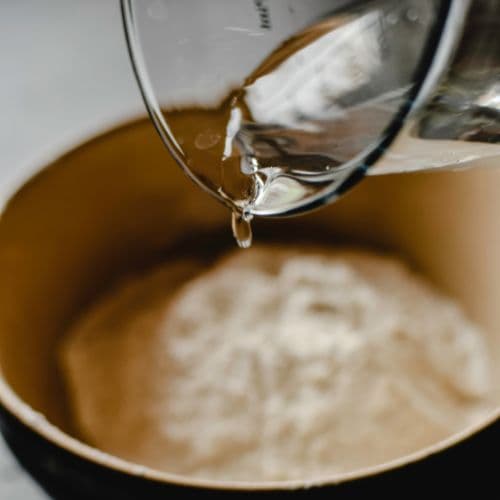
Experience how water temperature dramatically affects how quickly and effectively gluten develops in your dough. This knowledge helps you achieve consistent results and adapt to your baking schedule.
You'll Need#
300g bread flour (divided into three 100g portions)
195g water total (65g per sample)
3 small bowls
Digital thermometer (if available)
Ice cubes
Microwave or kettle to warm water
Quick Steps#
1. Prepare Three Water Temperatures#
Cold: 40-45°F (4-7°C) - Add ice cubes, then remove ice
Room Temperature: 70-75°F (21-24°C) - Use tap water at room temp
Warm: 95-100°F (35-38°C) - Warm gently in microwave or with hot water
2. Create Three Test Doughs#
For each temperature:
Add 65g water to 100g flour in separate bowls
Mix until no dry spots remain
Label each bowl
3. Begin Kneading#
Knead each dough for exactly 2 minutes, trying to use identical technique for each.
4. First Assessment#
Compare the doughs:
Which feels smoothest?
Which stretches most easily?
Which shows signs of gluten development fastest?
5. Continue Kneading#
Knead each dough for 4 more minutes (6 minutes total).
6. Final Comparison#
Perform a windowpane test on each dough:
Take a small piece and stretch it gently
Note which doughs stretch without tearing
Compare how thin each gets before breaking
Success Looks Like#
You should notice clear differences:
Warm dough: Develops fastest, feels most supple
Room temp dough: Moderate development speed
Cold dough: Develops slowest, feels stiffest initially
Why It Works#
Temperature affects gluten development in several ways:
Warmer temperatures make wheat proteins more flexible and reactive
Enzymes that help with gluten formation work faster in warmer conditions
Flour absorbs water more effectively at higher temperatures
Quick Tips#
In summer, use cooler water to compensate for warm ambient temperatures
In winter, use warmer water to achieve consistent dough temperature
Aim for a final dough temperature around 75-78°F (24-26°C) for most bread recipes
Apply This To Your Baking#
Adjust your water temperature seasonally to maintain consistent dough behavior year-round. Use cooler water when you want to slow development, warmer water when you need to speed it up.